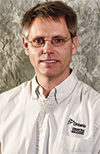When looking to buy new equipment or build new buildings, one of the key considerations is the cost of ownership or their fixed costs. The largest of the fixed costs is depreciation. Over the years, the assets will lose some or all of their original purchase price value through wear and tear, age and obsolescence. The difference between the purchase price and the future value of the asset is depreciation.
It is not an actual cash cost but a cost of ownership that acknowledges the loss in value and usefulness of machinery and buildings over time. Depreciation is an important consideration when purchasing new machinery or buildings to establish if the farm generates enough profit margin to allow for reinvestment as you plan for their eventual replacement.
There are a few terms that need to be defined related to depreciation:
- Economic life: How long the asset is expected to be used on your farm
- Useful life: The full-service life of the asset when it is worn out
- Salvage value or trade-in value: The estimated value of the asset at the end of its economic life
You are most concerned about the time frame you own the asset (economic life). This is usually less than the useful life for machinery, as farms will trade in or sell equipment before the end of its useful life. For buildings, the economic and useful life tend to be the same since farms don’t trade in buildings partway through their useful life.
There are two main methods of calculating depreciation: straight line (SL) and declining balance (DB). Straight line is easier to calculate and applies an equal amount of depreciation each year of the asset’s life. It is the average annual depreciation over the life of the asset.
Straight line is calculated as the purchase price minus salvage or trade-in value divided by the number of years. For example, straight line annual depreciation cost for a round baler purchased for $100,000 with an expected trade-in value of $35,000 at the end of 10 years would be ($100,000 - $35,000) ÷ 10 = $6,500. The $6,500 per year is applied to the annual costs for the 10 years of economic life.
The straight line depreciation rate is 1 divided by the number of years times 100 to arrive at a percent depreciation rate. In this example, the annual depreciation cost is 10% (1 ÷ 10 x 100) of the total depreciation = ($100,000 - $35,000) x 10% = $6,500.
The declining balance method assumes that assets are more productive and lose more of their value early in their life. It will calculate higher depreciation costs in the early years and less as the asset ages. It is more involved but will more accurately reflect depreciation in any given year.
Annual depreciation rates will vary based on the asset, how it is maintained, obsolescence and the annual usage. It is stated as a percent of the asset value. Buildings with an expected useful life of 20-25 years will have depreciation rates of 4%-5% annual depreciation rate (1/25 years and 1/20 years). Machinery will depreciate quicker than buildings, and rates typically used are in the 10%-15% per year range.
While you want to take full advantage of all tax incentives to manage income taxes, the depreciation rate used for tax purposes will typically depreciate assets faster than their expected life. A rate that better reflects the life of the asset is more appropriate for business management purposes.
Table 1 outlines the results of the declining balance method for the round baler example for the first five years. The beginning of the year value in year one is the purchase price and is multiplied by the depreciation rate. Using the above example and a 10% depreciation rate, the depreciation cost in year one is $10,000. The $10,000 is subtracted from the beginning value to arrive at a $90,000 ending value. This $90,000 becomes the beginning value for year two, and the above steps are taken again to arrive at the $81,000 year two ending value. Repeat this to the end of the number of years owned.

Straight line is a constant depreciation cost each year, while declining balance is a constant depreciation rate each year applied to the current value. The declining balance depreciation costs are higher in the early years and decline over time.
Regardless of the method used, including depreciation in your cost of production is important in your asset management decisions. Financial profits, which represent net farm income after accounting for cash and depreciation costs, provide insight into the farm’s ability to reinvest when machinery or buildings need replacement. If the numbers show there is not enough margin to afford the new equipment or building, there are a couple of questions to consider:
- Is it the right size for my operation? Buying or building something too large for the operation will result in overcapacity that the farm struggles to cover at its current size.
- Are alternatives to new a better option? Used equipment or hiring custom operators who can cover the ownership costs over more annual usage may be more viable, cost-effective options.










